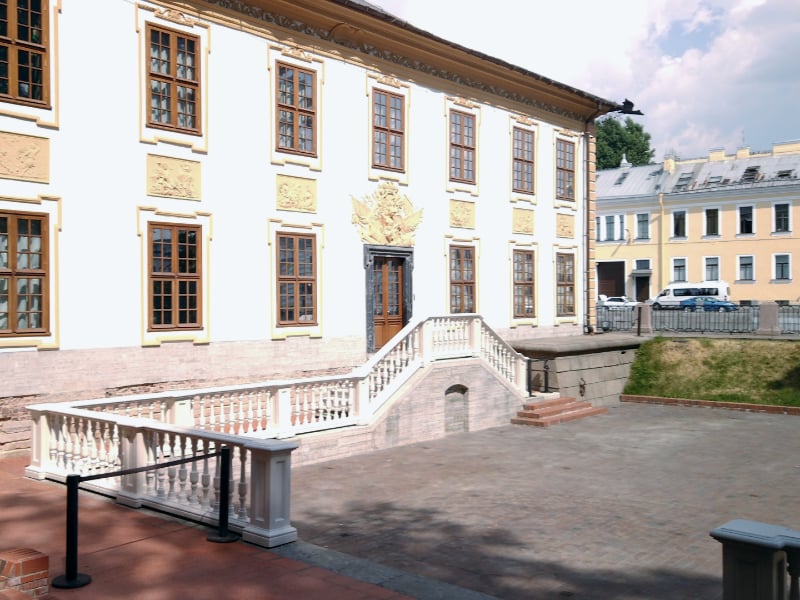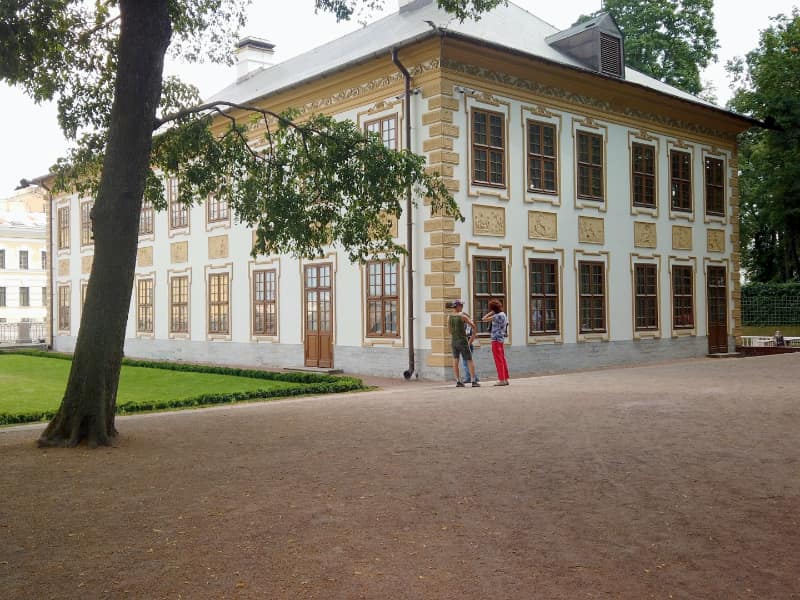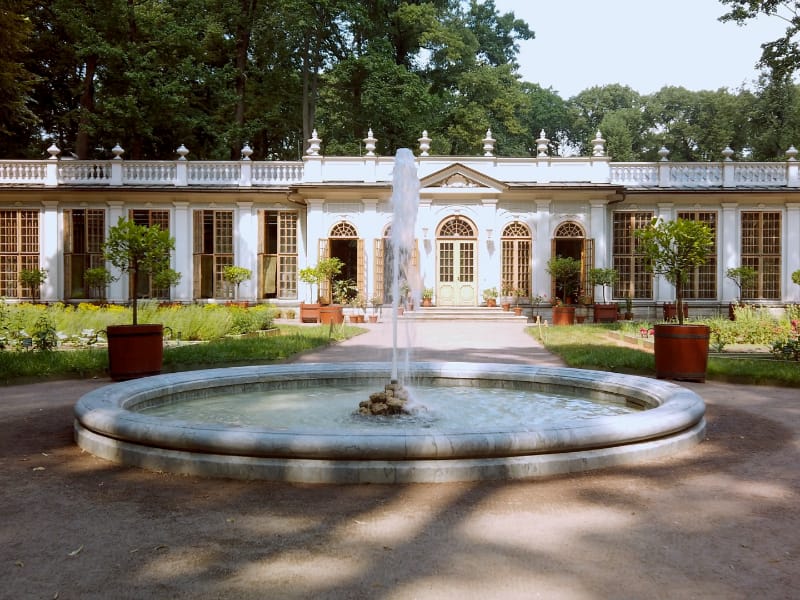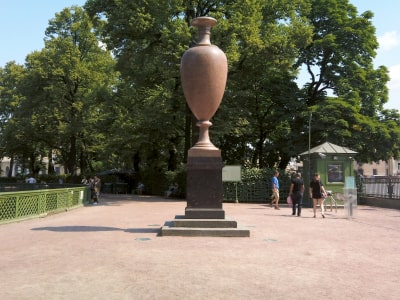Once an exclusive promenade area of the nobility, the Summer Garden comprises now a combination of a site of historical importance and a good alternative to stuffy indoor museums.
Summer Garden through History
The Summer Garden is the oldest garden in St. Petersburg: the works on its laying out started in 1704, the next year after the city’s foundation. Peter the Great entertained the idea of having a garden “better than the French king had in Versailles”. On his orders elms and oaks were brought to the swampy banks of the Neva River and planted to form symmetrical geometrically correct pattern of walkways. Sculptures for the garden were brought from Italy: Peter the Great commissioned replicas of ancient Greek and Roman originals.
The first fountains in Russia were arranged with water pumped from the nearby nameless river. Garden arbours and aviaries added to the decoration of the garden and entertainment of the guests.
The garden was vast and looked fabulous. However, it changed through history due to fashion of the day and natural disasters.
Thus, Catherine the Great preferred English landscaped gardens, and that was the period when the gardeners stopped trimming the trees and bushes. Also, several devastating floods happened in Catherine II’s time. Due to one of them (in 1777) the Summer Garden lost its fountains and acquired granite embankments. From the Neva side it was adorned with a graceful cast-iron fence, created on the project of Yury Felten.
Until the times of Nicholas 1 (second quarter of the 19th century) only noblemen could take a walk here. The emperor opened the Summer Garden to public and commissioned two new pavilions – the Tea House and the Coffee House. The Royal gift to Nicholas 1 from Charles XIV of Sweden – a huge porphyry vase – was placed to decorate the entrance from the Moika River side.
The last major transformation happened in the Summer Garden in 2009-2011, when during large-scale reconstruction works the fountains were returned to their historic location.
Nowadays this green spot in the stone jungle of St. Petersburg city centre is a comfortable place to hide from the heat in its shady walkways, an educational place with a range of activities for kids, and a place permeated with history at every turn.
Summer Palace of Peter the Great
This modest Dutch-style mansion of the great reformer-tsar is very well preserved despite its age (over 300 years) and historic upheavals (wars, revolutions, Soviet period).
The palace was constructed by Domenico Trezzini, the first architect of St. Petersburg on the place where a Swedish manor used to be.
The ground floor of the palace housed a reception room, a dining room with a kitchen and Peter the Great’s bedroom and workshops. Peter’s wife, Catherine 1, occupied the first floor.
Personal belongings and furniture of the Royal couple are well-preserved. The items are exhibited in the palace in such a way as to give a good idea of the habits, tastes and interests of the owners.
Opening Hours and Visitor Information
The Summer Garden and Palace are now officially part of the Russian Museum. They are available to visit daily except Tuesday (day-off). In summer (May through October) the garden is open from 10 a.m. till 8 p.m.. The Summer Palace of Peter the Great is open from 11 a.m. till 7 p.m.
Entrance to the Summer Garden is free. The Palace, however, requires the admission fee of 700 roubles per person.
We recommend including the Summer Garden in your St. Petersburg city tour or a walking tour in this area. This visit also combines well with a river and canal boat ride.





